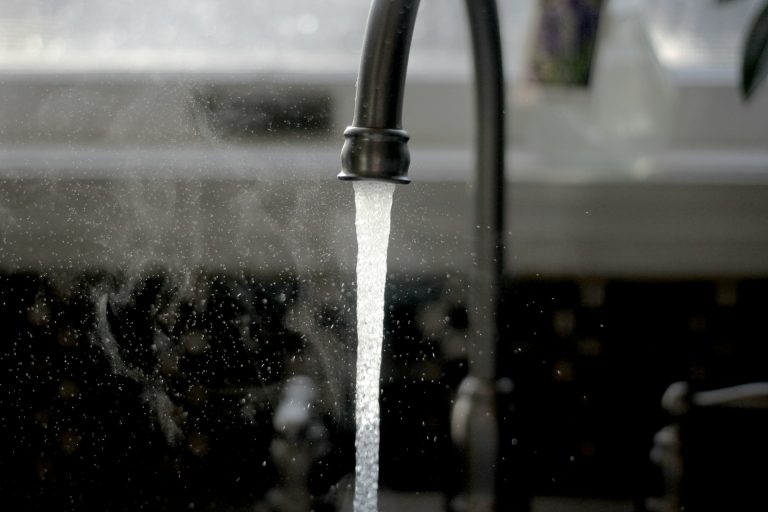18k vs 24k Gold: Which Is Better for You and Why It Matters

Gold jewelry isn’t just about shine, it’s also about how it fits your lifestyle, budget, and personal style. You’ve probably come across both 18k and 24k options when shopping or researching gold. But if you’re like most people, you’re left wondering what’s the real difference is? And does it even matter?
Let me walk you through everything you need to know about 18k vs 24k gold. I won’t bury you in fluff or throw in confusing jargon. You’ll get clear comparisons, simple facts, and some insights that don’t show up in most generic guides. I’m here to help you make a smart choice without wasting time or money.
What Does Karat Actually Mean?

Suppose you went to buy the best pearl necklace for men made of gold. You found two options with almost the same quality and design. Even so, the price difference is a few hundred bucks. Then you suddenly see that the number before “K” is different.
Karat (not to be confused with carat, which measures gemstones), mostly written K, tells us how much pure gold is in a piece of metal. Pure gold is marked as 24 karats, which means it’s made of 99.9% gold. If a piece is 18k, then it contains 75% gold and 25% other metals, like copper, silver, or nickel.
This isn’t just a technical detail. The karat number shapes everything like from how your jewelry looks to how long it lasts. So knowing the difference isn’t just helpful, it’s necessary if you want to buy wisely.
18K Vs 24K: Quick Comparison
| Feature | 18k Gold | 24k Gold |
|---|---|---|
| Gold Content | 75% pure gold + 25% alloy | 99.9% pure gold |
| Color | Rich yellow with a slight alloy tint | Deep yellow, almost orange in hue |
| Hardness | Harder and more durable | Softer and prone to bending |
| Jewelry Use | Ideal for rings, chains, and daily wear | Best for ceremonial or collectible items |
| Price | Lower cost than 24k gold | Highest price due to purity |
| Allergy Risk | May trigger sensitivity (due to alloy) | Hypoallergenic for most people |
| Tarnish Resistance | Resists tarnish well | Does not tarnish at all |
| Maintenance Needs | Low maintenance | Needs careful handling |
| Appearance Over Time | Holds polish and finish better | May scratch or lose shape with wear |
| Popularity in Jewelry | Very popular worldwide | Less common for everyday jewelry |
24k Gold: Purity at Its Peak
Nothing beats 24k in terms of purity. It’s as close to untouched gold as you can get. It shines with a deep, rich yellow and feels slightly heavier than lower-karat pieces. In some cultures, like those in India and parts of the Middle East, 24k gold is a symbol of status and is often bought during weddings or festivals.
But it’s not all shine and prestige. The softness of 24k makes it prone to scratches and bending. That’s why you rarely see it used for everyday rings, chains, or bracelets in Western countries. It’s more common in coins, bullion, or ceremonial items that stay safe in display boxes.
Why Softness Is a Problem
Gold in its purest form bends easily. If you wear a 24k ring every day, you’ll notice it losing its shape over time. It might even pick up dents just from minor knocks. That’s because there are no harder metals mixed in to provide strength.
Common Uses of 24k Gold
Jewelry made with 24k gold tends to be ornate, traditional, and worn for special events. You’ll find 24k bangles, necklaces, and pendants in many Eastern countries, passed down across generations. Investors also buy 24k bars and coins to hold wealth in physical form.
Cost and Value of 24k Gold
Because it’s purer, 24k gold costs more per gram than any other type. You’re paying for the purity and the weight. But its resale value can fluctuate based on market demand, purity verification, and craftsmanship. That’s something many people overlook when buying purely for emotional or cultural reasons.
18k Gold: Balance Between Strength and Shine
Now let’s look at 18k gold. It hits the sweet spot for most of the people; high purity, but tough enough for daily wear. At 75% gold and 25% alloys, it keeps a luxurious appearance while being far more practical than 24k.
You’ll see 18k used in engagement rings, designer necklaces, and high-end watches. It’s the go-to choice for those who want gold that looks rich but also holds up well over time.
The Added Metals Make a Difference
Those added metals are there for a reason. They make 18k gold stronger, giving it resistance against wear, scratches, and pressure. Depending on the alloy, it may also affect the shade—some 18k pieces look more rosy or pale yellow compared to 24k’s deep tone.
Appearance Isn’t Always About Brightness
While 24k gold has a striking yellow hue, some people find it too bold or flashy. 18k offers a slightly muted look, which many buyers in the West find more stylish and modern. It still feels premium, just a bit more understated.
Price vs. Performance
18k costs less than 24k because of the lower gold content. But it’s not just about price—it’s about what you get for the money. You’re investing in a piece that stays intact longer, which means lower repair or replacement costs later.
Which One Is Better for Jewelry?

There’s no universal answer, but let’s break it down based on real-life situations. If you want to buy something that sits in a safe or is worn only once a year, 24k could be the right pick. For something you’ll wear every day, 18k is more practical.
Not all jewelry serves the same purpose. If you’re gifting a necklace to someone who works with their hands, durability matters more than extreme purity. On the other hand, if you’re following family tradition or gifting for a major life event, that higher purity might carry deeper meaning.
18k for Daily Use
Watches, bracelets, earrings; these are often subject to wear. In such cases, 18k stands out. It holds up better in daily conditions. Many luxury brands, especially in Switzerland, rely on 18k gold for exactly this reason.
24k for Traditional Value
In many families, especially across Asia, gold isn’t just for show—it’s a form of savings. 24k fits that role perfectly. It’s bought during religious events or stored as a long-term asset. The purity ensures it remains desirable across generations.
Consider Your Skin Too
Some people have metal sensitivities. While both 18k and 24k gold are hypoallergenic for most, the added metals in 18k can cause reactions in rare cases. If you have sensitive skin, ask about the specific alloy mix before buying.
Cultural and Emotional Factors
Let’s be honest, gold isn’t always a rational purchase. It carries stories, meanings, and memories. In many parts of the world, gifting 24k gold is a sign of respect and prosperity. Its weight and shine aren’t just about looks; they represent stability, heritage, and hope.
On the flip side, modern buyers often favor practical elegance. They want gold that goes with casual outfits, formal wear, or office attire. For them, 18k is the better match as it blends utility with style.
Market Trends and Buyer Behavior
Recently, there’s been a shift in how people view gold. Younger buyers are less focused on karat numbers and more interested in aesthetics and brand identity. Meanwhile, older generations still lean toward purity and resale value.
Many Reddit users mention how they got tricked into paying more for “higher karat” gold without realizing it wouldn’t last. That’s a key point. Always think about how and where you’ll use it. Don’t let numbers alone drive your choice.
Maintenance and Long-Term Use
Cleaning gold is simple, but the karat rating plays a role here too. 24k requires gentle handling. It scratches more easily, so you can’t use abrasive cleaners or stiff brushes. 18k, being harder, can handle mild cleaning more often without losing its form.
Repairs also cost more for 24k pieces, since the pure material is softer and harder to work with. If you’re someone who tends to wear your jewelry often and everywhere, 18k might save you money over time, not just on buying but also on upkeep.
Resale and Investment Talk
If you ever plan to sell your jewelry, keep in mind that buyers will inspect purity, weight, and condition. While 24k sells well because of purity, it’s not always the best investment unless stored safely. 18k, especially from known brands, can fetch good prices too, because sometimes even more, depending on the design and craftsmanship.
FAQ
Is 24k gold better than 18k for daily wear?
No, 24k is softer and less suited for daily use. 18k offers more strength and lasts longer with regular wear.
Can 18k gold tarnish over time?
It doesn’t tarnish easily, but minor fading or scratches can appear due to the alloy mix.
Why is 24k gold more yellow than 18k?
Because it’s pure, its color is richer. 18k contains other metals that tone down the yellow shade.
Is 18k gold real gold?
Yes, it contains 75% real gold and is considered high-quality and authentic.
Does 24k gold cause skin reactions?
Pure gold is hypoallergenic, so 24k rarely causes issues. Reactions are more likely with mixed metals.
Final Thoughts: Which Karet Should You Choose
Let me wrap it up like this, if you want elegance with everyday reliability, go for 18k. But if your heart leans toward symbolic value and maximum purity, 24k makes sense. But don’t buy based on hype or pressure. Your lifestyle, skin sensitivity, and budget should guide the decision.
Gold isn’t just a metal, it’s a choice that stays with you for years. Choose the version that suits you, not just the label on the tag. Whether it’s for style or sentiment, the right karat is the one that fits into your life, not the one that just sounds better on paper.






